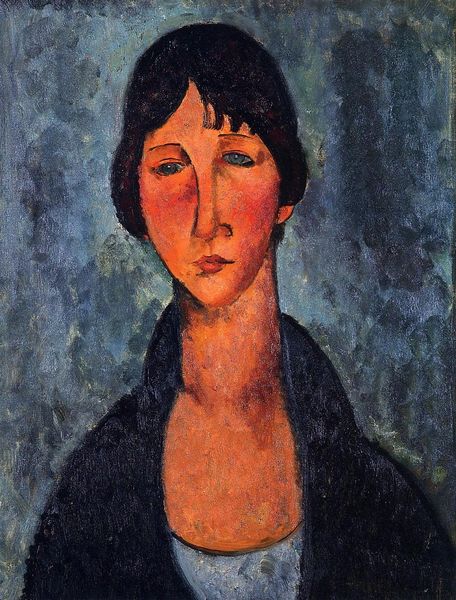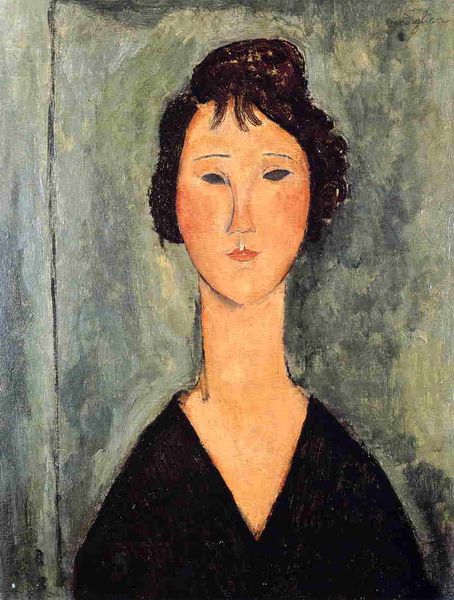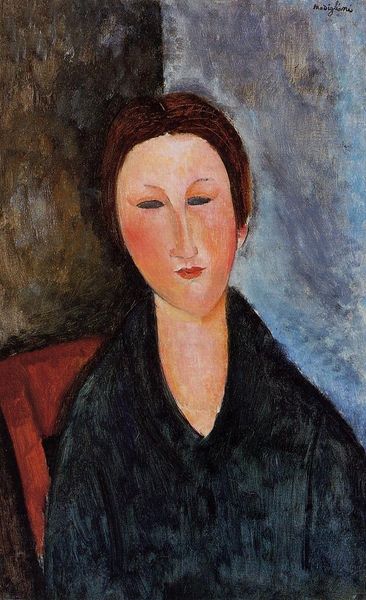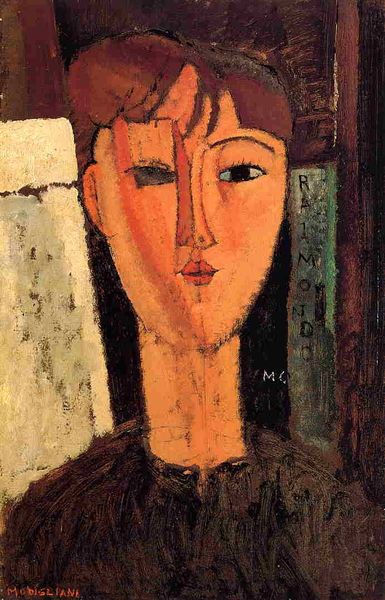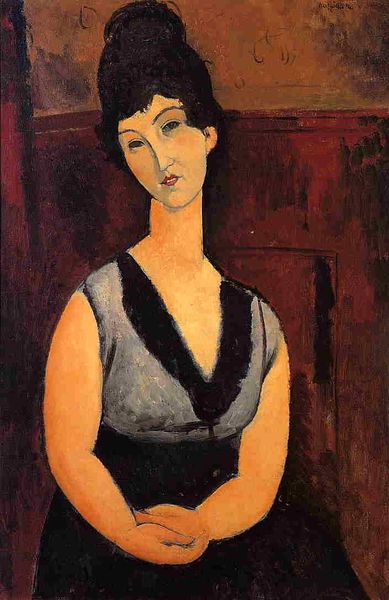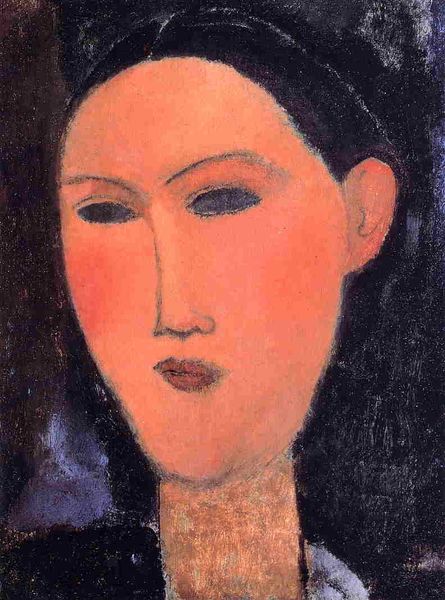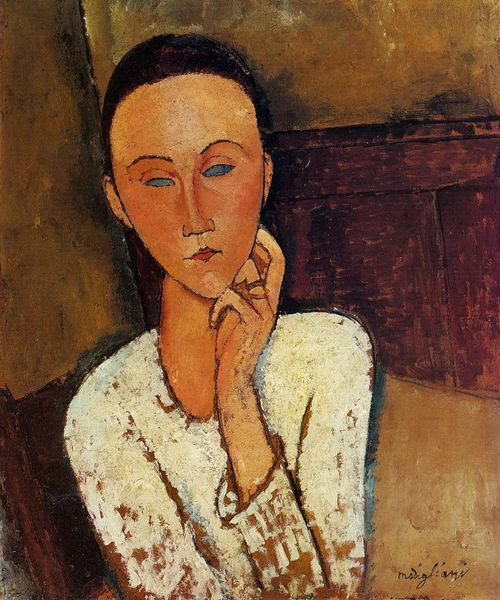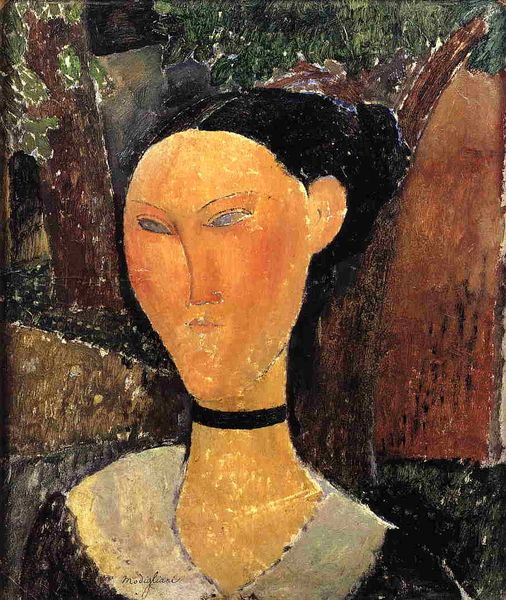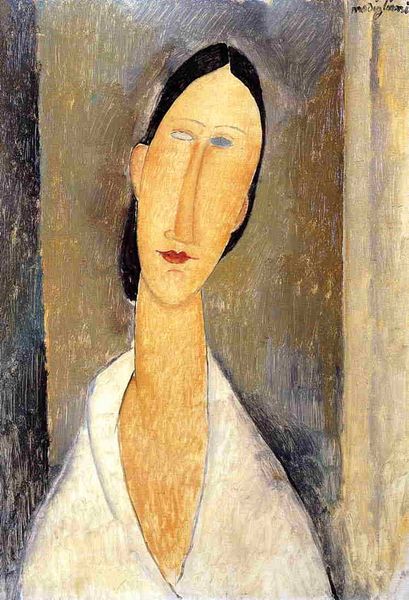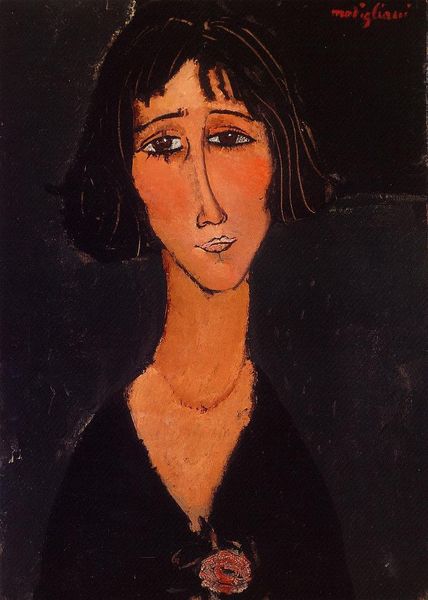
oil-paint, impasto
#
portrait
#
oil-paint
#
oil painting
#
impasto
#
expressionism
#
modernism
Dimensions: 55.5 x 38.5 cm
Copyright: Public domain
Curator: Amedeo Modigliani’s 1917 oil painting, "Jeanne Hebuterne with Necklace," draws your attention immediately, doesn’t it? The elongated features and melancholic gaze are quite striking. Editor: Yes, the length of her neck and the simplified forms give it a very stylized and modern feel, and I also note how somber and serene she appears. What statements do you believe Modigliani makes with these techniques? Curator: Modigliani was deeply influenced by various avant-garde movements, including Cubism and African art. Considering this was created during the tumultuous period of World War I, the elongated features and abstracted forms could be seen as a commentary on the distortion and alienation of the human form within a rapidly changing and increasingly violent world. Her somberness also reflects a kind of resignation amid this chaos. The necklace seems deliberately placed; how might that add another layer? Editor: Perhaps the necklace acts as a symbol of the elite, of the social structures that fueled such massive inequality leading to the war? It seems intentionally opulent against such a subdued figure and backdrop. Curator: Precisely. Her individual identity intersects with larger societal themes and upheavals of the time. Her gaze confronts us, inviting us to not only acknowledge her existence but also to question the very systems that define and often confine it. I’m interested to know, how does her expression challenge or affirm the typical portrayal of women in art during that period? Editor: The lack of overt emotion contrasts with the highly sexualized portrayals of women from earlier periods. Her serenity could represent an inner strength or resistance. Viewing art through that intersectional lens really gives you a fresh perspective. Thank you for that! Curator: The pleasure is all mine. It reminds us that art is not made in a vacuum; it is intrinsically linked to broader social, political, and historical contexts.
Comments
No comments
Be the first to comment and join the conversation on the ultimate creative platform.

